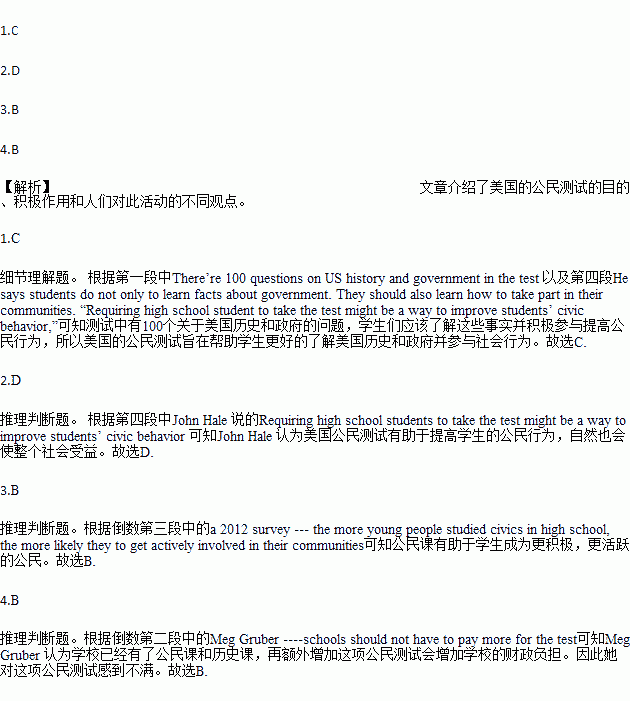题目内容
Recently, a new law in Arizona requires high school students to pass the United States’ citizenship test. There’re 100 questions on US history and government in the test.
The Joe Foss Institute helped created the law. They want to pass a law in each of the 50 states to require high school student to pass the test.
A 2010 national test showed only about 25 percent of students in their final year of high school had a good understanding of American government. Thirty-six percent did not have even a basic understanding.
“That’s a shame, and it’s not only a shame.” Said John Hale, the Associate Director of the Center for Civic Education California. Mr. Hale thinks it is dangerous when citizens do not know or care about how their government works. He says students do not only to learn facts about government. They should also learn how to take part in their communities. “Requiring high school student to take the test might be a way to improve students’ civic behavior,” he says.
But some wonder if a test young people take in high school will make adults more active in their communities.
Sam Stone writes reports for the Joe Foss Institute. He says research shows that civic education does result in more involved adults. He noted a 2012 survey found that the more young people studied civics in high school, the more likely they were to get actively involved in their communities.
In another state, Virginia, many people are against the test. Meg Gruver is the president of the Virginia Education Association. She says students already take classes in civics and US history. And, she says, schools should not have to pay more for the test.
Sam Stone agrees. He says his organization is paying for an online testing website. Schools can use the website to give the test for free.
1.The US citizen test________.
A. is a required test all over America
B. was created by the Joe Foss Institute
C. helps students understand America government
D. has been included in American law for five years
2.What might John Hale agree with?
A. How the US government works should not be open to the public.
B. It’s a shame that the US government is unpopular with students.
C. Community activities outweigh facts about the US government.
D. The US citizenship test will be good for students and society
3.The result of the 2012 survey_________.
A. was different from Sam Stone’s findings
B. showed civics helped students become more active citizen
C. showed it was hard for more young people to pass the civics test
D. showed students were as interested as adults in their government
4.What did Meg Gruber think of the citizen test?
A. Uninteresting B. Unsatisfying
C. Acceptable D. Fair
 心算口算巧算一课一练系列答案
心算口算巧算一课一练系列答案
